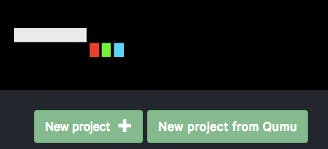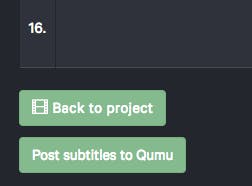Making good tools work together
Businesses are exposed to an ever growing range of platform options that can improve how they do business. Speeding things up, improving quality, automating, evolving. As we increase the number of tools, the transactional overhead can become costly. More training, more authentication, security issues, and ultimately more time and cost to manage between systems.
We wanted to work on bringing together internal systems that currently exist and sit next to each other in the business ecosystem. These systems in the enterprise video ecosystem (for internal, external and broadcast usage) essentially work next to each other but in relative isolation in terms of data flow and authentication – carrying out sequential tasks with the same outcome – creating and distributing the best possible video content in front of employees and customers. Systems not speaking to each other, in our minds is akin to not collaborating with your own employees. Without the communication there’s a cost and with the communication between systems there’s a a tangible gain. In this case, time lost or time gained in the end-to-end workflow, tighter security and overall better experience and joy for the person operating.
CaptionHub, we think, should play its part to bring happiness to the enterprise video ecosystem. So working with CaptionHub partner Qumu we built the CaptionHub-Qumu integration. We’re very excited to be creating this technology partnership with Qumu who are leading the way in enterprise video, their credentials speak for themselves. We wanted employees and freelancers using Qumu, to be able to move between QumuCloud and CaptionHub seamlessly.

Global teams, global problems
CaptionHub teams, are by and large geographically dispersed. Working across timezones and borders which is especially true when it comes to linguists and translators, who more often that not are located in their home country. This means having to accommodate permanent and freelancing staff in multiple locations, in the office and of course at home. Security can’t be compromised and so enterprise tools have to flex. Access, onboarding and authentication needs to be as seamless and effortless as it possibly can be.
So, goal number 1 for us was to ensure marrying of the two systems created enhanced enterprise security. Since new projects in CaptionHub can be created directly from QumuCloud, no video asset has to be manually downloaded from Qumu, stored locally or off secure-grid, then up-loaded into CaptionHub. Video’s are selected and securely sent between the two platforms.
Security is important but time is our global currency
When we’re talking about a lot of video – and often we are dealing with volume – removing the need for manual upload of video to CaptionHub, and at the other end of the workflow, being able to send multiple caption sets, in multiple languages, straight back to the original video in Qumu – is a huge timesaver. With the Qumu integration, the user simply selects which video they want to work on from CaptionHub (listed as all available videos from Qumu) and then can go to work on that video. Once captions are approved, the ‘Send to Qumu’ button – send the caption sets back and integrates directly into the original video making the captions globally live, instantly.
So, selecting a video project directly from Qumu means no assets are taken out of platform – secure and instant:

But also as important – caption assets are sent back directly from CaptionHub to Qumu (we talk a bit more about time saved below):

We are obsessively talking about the year of the API at CaptionHub HQ for good reason. We released the CaptionHub API in 2017 and have been developing how it can lock into the ecosystem better at an exciting velocity. In 2018 we’ll be integrating with systems to help bring the video ecosystem together. If you’d like to find out more about our plans, or suggest an idea to us – we’d love to talk to you. You can contact us here.